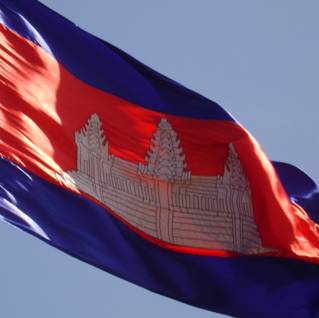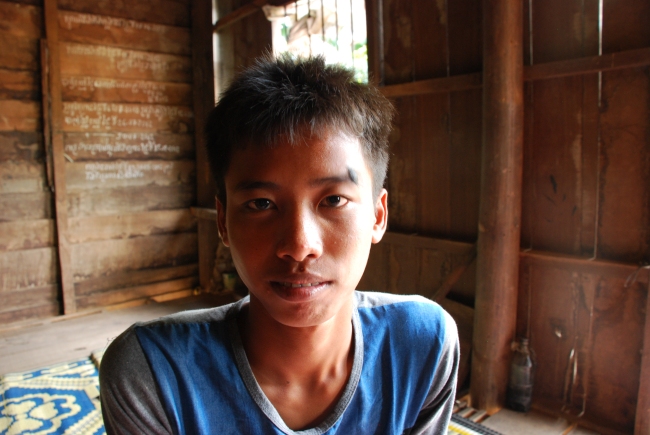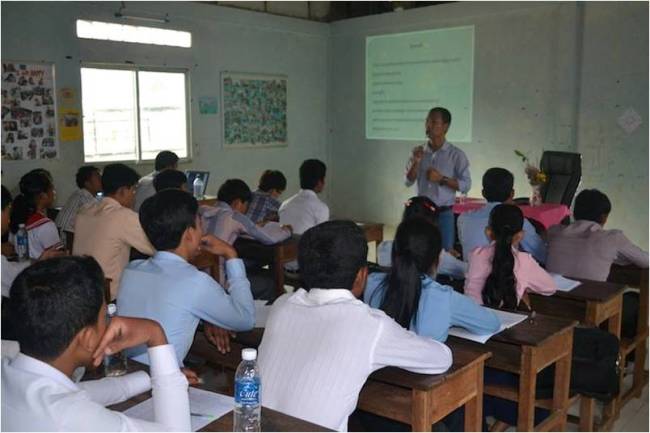
Flagging a problem. Is the wealth gap growing in Cambodia?
I must admit a personal distaste for “get rich” seminars that seem well designed to excite people into parting with their hard earned cash. There may be merit in the teaching of Mr Rich Dad Poor Dad Robert Kiyosaki, but there was something obscene about the advertising for his course being run in Phnom Penh this year. Kiyosaki wasn’t presenting in person – the seminar would be taken by a multimillionaire who got that way by adopting the methods that had been taught since the Rich Dad Poor Dad franchise began in 1992. The banner is what put me off: How the rich get richer!
This is a problem for Cambodia, because in the years since 1979 while the economy has grown for this little nation, basically starting at ground zero, there is still a significant problem of poverty. A visitor spending a day or two in Siem Reap might not notice; after all the hubbub of traffic and commerce is headache inducing. Or go to the Phnom Penh, and the skyline is dotted with cranes, and new buildings are changing the skyline. The question is, with growing GDP, where is the wealth heading? Is it trickling down? Or trickling up?
First let’s look at the productivity per person in Cambodia. Measured in the international currency of US dollars this has grown. Figures from the International monetary fund – the IMF.
- 2009 when it was $1,942.74
- 2010 when it was $2,068.02
- 2011 when it was $2,239.24
- 2012 when it was $2,402.33
- 2013 when it was $2,579.06
That’s a 33% growth in just four years, enough to nudge Cambodia from From being the 38th poorest nation in the world measured in these GDP terms in 2008, to become the 43th poorest nation in the world by 2013.
The income distribution is far from equitable in Cambodia. World Bank figures suggest that the wealthiest 10% in Cambodia earned approximately 30% of the total income – a figure that has slipped slightly between 2004 and 2007.
Meanwhile the bottom 10% of income earners earn around 3% of the total national income. This figure has hardly moved between 2004 and 2009. Put another way, using UN estimates, in 2004 Cambodia’s richest 10% earned 12.2 times more income than Cambodia’s poorest 10%.
This ratio of 12.2 is comparable to many other countries – 12.5 in Australia example, or 15.9 in the USA (estimate in 2007) where the CEOs of large firms seem to routinely earn multimillion dollar salary packages.
But there are some signs that the situation is getting worse in Cambodia. This is due to several factors including:
- Poor health conditions.
- Malnutrition.
- Financial barriers to advanced education.
- Environmental vulnerability – floods, storms or droughts can cripple farmers incomes. I have noted elsewhere in this blog that Cambodia has been independently rated amongst the world’s most ecologically vulnerable nations on this planet.
- The commodity nature of rice farming in Cambodia – where farmers are priced takers, and do not have premium product with which to make greater margins.
- The taking of farmers land by large corporations.
- Extensive ownership of capital by foreign controlled entities.
- Corruption at all levels.
This overall situation creates an air of hopelessness for the rural poor. How can they ever succeed if they cannot send their children to school, if they cannot afford your equipment, or if they lose their land.
I was pondering how this hopelessness begins at a very early age, especially amongst children and families so poor that starvation or malnutrition is a serious problem.
Two Hong Kong academics wrote a report in 2009 concerned with early childhood education. They were examining the weak infrastructure around pre-schooling – noting that while the Ministry of education youth and sport (MOEYS) is committed to the idea of preschool, to help give young Cambodian infants head start educationally, in practice there is scarce public funding for such a strategy. This has been left up to the communities to provide. A case I suspect, whether rich get richer, and the poor don’t even get a start at all.
Here’s what they said in their report:
Exclusion on the grounds of poverty.
No one is more likely than a child to live in poverty in Cambodia
(UNICEF & RGOC, 2006). The representation of the poor is much greater in the primary than in the secondary or tertiary student population. In Cambodia 20% of primary students but only 2% of upper secondary students are drawn from the poorest 20% of the population. In contrast, 61% of the upper secondary students come from the richest 20% of the population. The representation of the poor in tertiary education is zero whilst the richest 20% account for 57% of tertiary level students.
As has already been discussed, poor children are currently rarely found in preschool provision and the MoEYS has identified them as a target group on which to spend its limited resources for ECCE in order to ensure equity of opportunity. It acknowledges that this is likely to be challenging as the poorest communities lack good models, infrastructure and experienced providers.
Preschool and Preparation for Primary School
It is widely accepted that preschool experiences, by preparing the child academically and socially for school, lowers repetition and drop-out rates. The benefit is felt most by children in the poorest communities. Yet in Cambodia, children with the greatest need of the chance to learn in groups, mix with others, acquire pre-academic and language skills before they begin primary school are the ones that have the least access. Thus ECCE is not only intrinsically important but is needed to provide experiences and preparation that gives a child a much better chance of succeeding in school and completing at least six years of primary school. ECCE is a vital component of a successful Education for All strategy.
Although the initial enrolment in primary school has improved significantly, the drop-out rate remains stubbornly high and one of the main reasons is poverty. Families are often unable to pay the cost of schooling that can amount to 79% of per capita nonfood expenditure of the poorest 20% of families.
Another significant concern regarding children in Cambodia is that at the formal age of enrolment into primary school, many are too immature in their physical, social, linguistic and cognitive development. This is reflected in delayed enrolment and high repetition rates in Grade 1 leading to high dropout rates (RGOC, 2003). They are simply not ready for school as a result of malnutrition and lack of preschool experiences. Only 58% of Grade 1 students are six years old, the prescribed school entry age.
Only 45% of children in Cambodia who start primary school will complete Grade 6, and only 38% will enter lower secondary school. It takes an average of 10.8 years for a child to complete the six-year primary school cycle (UNICEF & RGOC, 2006).
Early Childhood Care and Education in Cambodia by Nirmala Rao Veronica Pearson, The University of Hong Kong
(International Journal of Child Care and Education Policy Copyright 2009 by Korea Institute of Child Care and Education
2009, Vol. 3, No. 1, 13-26) For A PDF of the report CLICK HERE
I accept that many of the figures I have highlighted for emphasis have improved somewhat, since these figures were first collected, but they highlight why free education is so valuable for poor rural areas.
Imagine that – just 2% of those who make it to grade 12 at high school, come from the poorest 20%.
Last week Savong sent me the list of students from his school who have progressed through to winning University scholarships – a program we instigated four years ago. The first two graduates have already come through, and their two cohorts have both taken up teaching jobs, just a few papers away from completing their degrees.
Meanwhile more recent scholarship winners are attending Angkor University, and studying computer science, tourism (which has a strong management component) as well as English. these students have a lot of pressure on them in some ways. They know their families will depend upon them, and they know there are up against much more privileged students from the city. When Rao and Pearson wrote their report, at that stage less than half a percent – statistically 0%- of tertiary students in Cambodia came from the poorest 20%. And at that stage less than 10% of teenagers were progressing through to University education. so if you allow me to roughly play with figures, that makes the chances of producing graduates from Bakong something like 1000:1.
Those are the kinds of odds that families are up against in poor rural areas within Cambodia. Those are the odds that Savong and his supporters, and his staff, are working hard to beat.
For more: Let’s not forget the costs of poverty – and the pressure it puts on young people








You must be logged in to post a comment.